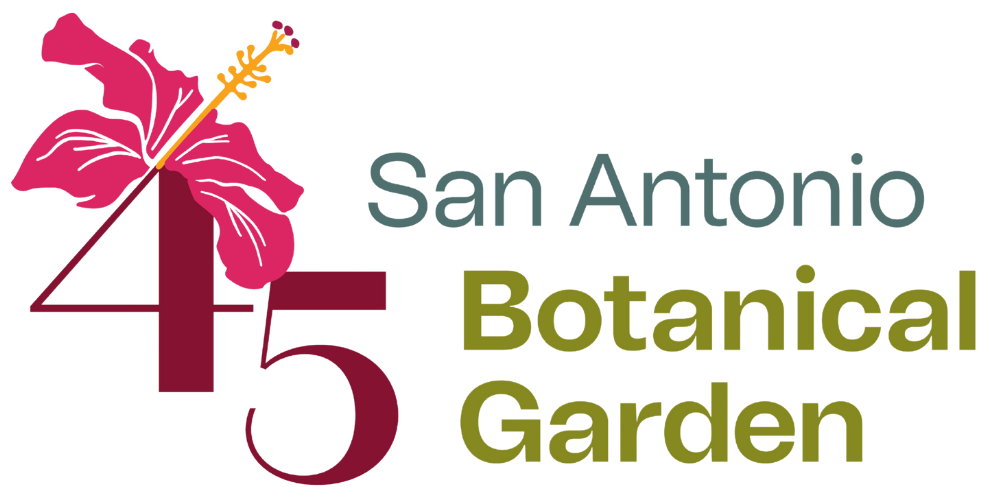WaterSaver Landscaping
Did you know that about 30% of the water used in San Antonio households is applied solely to landscapes? Low water landscaping is strongly encouraged in arid climates, where water is a limited resource. Drought tolerant gardens and efficient irrigation are both extremely important in areas such as San Antonio and other climates where rain is not plentiful.


Tips for WaterSaver Landscaping
Design
Plan before you plant sketch your existing yard and add the beds and features you would like. Group plants by sun and water needs and give plants room to grow. There are many WaterSaver plants to choose from to create any look or feel you like. Visit GardenStyleSA.com and find the right plants and more design ideas for your garden paradise.
Basic Design Principles
- Rule of Three: Use plants in odd-numbered groupings to create relaxing visual patterns.
- Focal Points: Include a birdbath, statue, specimen plant, or a yard art piece.
- Views: Don’t forget to consider the view of your garden from inside your home.
- Backbone Plants: Use evergreen plants and strong architectural shapes to anchor your garden.
- Patios & Walkways: Main paths should be wide enough to walk comfortably (ideally 3 feet). An 8’X12’ patio will seat four. Always err on the side of larger patios and you will rarely be disappointed.
- Color Options: Use your personal style when selecting color! Monochromatic schemes evoke serenity; complementary colors can be energizing.
Healthy Soils
Healthy soil is important for your landscape as it supports life. Clay, loam, and sand are the basic categories of soil, and soil depth will determine many garden choices. Thin, stony soils and deep, clay soils are common in the San Antonio region.
Thin Soil: In the Texas Hill Country, soils are often less than six inches deep. Choose plants that can thrive in these thin soils.
Turfgrass will not do well on thin soil. It requires at least six inches of soil and full to part sun to thrive.
Deeper Soil: More versatile for plant selection, deep soils found in the San Antonio region are clay or sand-dominated.
Alkaline Soils: Soils around San Antonio are generally alkaline (from limestone bedrock). Acid-loving plants like azaleas, hydrangeas, gardenias, and ranunculus from the eastern and southeastern United States will be very difficult to grow here.
Compost: Amend soil with organic matter, such as well-aged compost, annually to improve soil structure and texture and improve water and nutrient-holding capacity. But choose plants for the soil profile you have, not the one you aspire to. All plants will benefit from organic compost.
For more information about soil, compost, and soil health benefits, visit GardenStyleSA.com.
Plant Selection
Select plants adapted to the conditions in your yard and consider your preferences for color, style, and wildlife benefits.
- Sun Exposure:
- Full sun: six hours a day or more.
- Partial sun or partial shade: three to six hours a day
- Shade: less than three hours per day.
- Established Size: Find out how tall and wide the plant will be when it is fully grown. Hint: Plant tags at most nurseries will have this information.
- Soil Profile: Do you have thin soils or deep soils? Turfgrass on thin soil is a losing proposition; a native mix of Texas wildflowers or short native grasses will fare better. Or use beds, patios, and pathways, and skip the turf.
Common Name | Plant ID |
Asparagus densiflorus ‘Myersii’ | |
Phystostegia virginiana ‘Pink Manners’ | |
Rusellia equisetiformis ‘Lutea’ | |
Gopher plant | Euphorbia rigida |
Conoclinium greggii | |
Penstemon triflorus | |
Malvaviscus arboreus var. mexicanus PINK | |
Plumbago auriculata | |
Dasylirion texanum |
Common Name | Plant ID |
Mahonia trifoliata | |
Aster oblongifolius | |
Salvia greggii ‘Mirage Deep Purple | |
Dalea frutescens ‘Sierra Negra’ | |
Melampodium leucanthum | |
Leucophyllum frutescens | |
Rosa chinensis ‘Mutabilis’ | |
Lagerstroemia ‘Purple Magic’ | |
Chilopsis linearis | |
Gaura lindheimera ‘Belleza Light Pink’ | |
Monarda citriodora | |
Ruellia ‘Mayan White’ | |
Ruellia ‘Mayan Pink’ | |
Pavonia hastata | |
Yucca pallida | |
Setcreasea pallida ‘Purple Heart’ | |
Pavonia lasiopetala | |
Muhlenbergia reverchonii ‘Undaunted’ | |
Justicia brandegeana ‘Fruit Cocktail’ | |
Shrubby Boneset | Ageratina havanensis |
Common Name | Plant ID |
Lonicera sempervirens | |
Salvia darcyi | |
Juniperus virginiana ‘Taylor’ | |
Tecoma x ‘Sierra Apricot’ | |
Rhus virens | |
Calliandra eriophylla x californica | |
Fragrant Olive | Osmanthus fragrans f. aurantiacus |
Justicia spicigera | |
Elaeagnus x ebbingei ‘Olive Martini’ | |
Caesalpinia pulcherrima | |
Pennisetum ‘Vertigo’ | |
Rock Penstemon | Penstemon bacharifolius ‘Diablo’ |
Common Name | Plant ID |
Amistad Salvia | Salvia ‘Amistad’ |
Artemisia ‘Powis Castle’ | |
Iris Remontant Bearded Mix 1 (40%/60%) ‘Harvest of Memories’; ‘Orange Harvest’ | |
Blue Lyme Grass | Elymus arenarius ‘Blue Dune’ |
Cigar Plant | Cuphea micropetala |
Cigar Plant | Cuphea ignea |
Echinacea purpurea ‘Magnus’ | |
Spaeralcea ambigua | |
Anisacanthus quadrifidus var. wrightii | |
Muhlenbergia lindheimeri ‘Autumn Glow’ | |
Scutterlaria suffrutescens | |
Prarie Dropseed | Sporobolus heterolepis |
Hesperaloe parviflora ‘Desert Flamenco’ | |
Melinus nerviglumis | |
Salvia ‘Indigo Spires’ | |
Panicum virgatum ‘Northwind’ | |
Opuntia canacapa ‘Ellisiana’ | |
Cercis canadensis var. texensis | |
Galphimia gracilis | |
Stemodia lanata | |
Scutterlaria wrightii |
Common Name | Plant ID |
Iris sp. | |
Hamelia patens | |
Tetraneuris scaposa | |
Aloe saponaria | |
Square-bud primrose | Calylophus berlandieri |
Find over 500 WaterSaver plant selections on GardenStyleSA.com.
Turfgrass
Turfgrass requires more maintenance and more water than other landscapes. Limit turfgrass to areas with a purpose and choose a drought tolerant grass. Warm season turfgrasses for the San Antonio area include:
- Bermuda grass – Full sun. It can be invasive in adjacent beds and hard to remove.
- Buffalo grass – Full sun. This grass has a natural look and does not take high foot traffic. Mow only once or twice a year.
- Zoysia grass – This lawn option can take some shade and traffic.
Recommended turfgrass management practices:
- Do not use turf as a default ground cover. Install it for a reason, such as a play area or for pets.
- Have at least six inches of soil depth.
- Let it go dormant (brown) in the summer.
- Add ¼ to ½ inch of compost in early spring.
Irrigation
A well-planned landscape will need little supplemental irrigation once established. Homes with in-ground irrigation systems use 50%-70% more water than homes without them, averaging 2,000 gallons of water each time it is run. This can easily add up to be more than your monthly indoor water use and affect your water bill.
Best option? Design a WaterSaver landscape that can thrive without an irrigation system.
Tips for irrigation system owners:
- For established landscapes, evaluate areas where plants no longer need regular watering and consider retiring the irrigation system in those areas.
- Learn how to use your controller and only run manually as needed.
- Monitor the system for leaks, breaks, and other costly mishaps regularly.
Ground Covers
Mulch is anything you put in a garden to cover soil. It helps keep moisture in the soil, manages small weeds, and can keep the soil cooler in summer.
Two types of mulch:
- Inorganic: This includes decomposed granite, pebbles, or larger rocks. It needs more maintenance to keep neat. Place away from the street to prevent clogging storm drains.
- Organic: Shredded bark, wood chips, and leaves have the added benefit of decomposing slowly, adding structure and nutrients to the soil. You will need to replace organic mulch annually.
Tip: Leaves are a great free organic mulch, arrive in your yard once a year with no hauling, and build good soil structure as they decompose. Just let them fall and rake them into your beds.
Learn more about mulch and compost at GardenStyleSA.com
Maintenance
The goal of a WaterSaver landscape is to reduce water, eliminate the need for fertilizer and pesticides, and increase biodiversity. These are generally low maintenance yards for most people.
- Hand water to establish plants and then water deeply and infrequently in the absence of rain.
- Prune trees and large shrubs only as needed for shaping or safety.
- Support wildlife by waiting until February to cut back perennials that die back to the roots every winter and return in spring. Seeds and woody stems left throughout the winter provide food and cover for wildlife.
- Stay on top of weeds in new beds for the first one or two years. Once plants are full grown, they will shade out most weeds.
- Mulch beds with organic bark mulch or leaves to minimize weeds.
Tip: Weeding after a rain is easier.
Appropriate watering and pruning will lead to healthier, more sustainable landscapes.
WaterSaver landscapes need no fertilizers or pesticides to thrive. To explore recommended maintenance practices, visit GardenStyleSA.com.
Welcoming Wildlife
Including native plants in landscapes provides three basic habitat elements which will attract and sustain birds, butterflies, hummingbirds, and other wildlife.
- Shelter for protection and nesting – a mix of native or adapted low, medium, and tall evergreen and deciduous shrubs and trees.
- Food for sustenance – a diversity of native and adapted flower colors will attract different pollinators.
- Add a birdbath to cover the last element, water – a simple dish with shallow standing water or a fountain-type will attract a diversity of species.
Get started today with the following resources:
- Attend Adult WaterSaver Classes at the Botanical Garden and receive a free copy of a SAWS Landscape Care Guide
- Public Presenters who discuss drought tolerant landscaping
- Guided Group Tours
- Learn on a Nature Walk
- See examples of landscaping in WaterSaver Community and KYSE WaterSaver Garden
Sponsored by the San Antonio Water System (SAWS), WaterSaver Community is an exhibit designed to inspire residents to create beautiful landscapes that conserve water. Located near the Auld House and the Old Fashioned Garden, WaterSaver Community is a wonderful, appealing, and educational neighborhood at the Botanical Garden. It is a charming cluster of miniature cottages with colorful diminutive gardens whose blooms belie their thrifty ways with water. Each tiny cottage is a different architectural style, complemented by its own front yard or attractive well-adapted drought-tolerant plants.
KYSE WaterSaver Garden and WaterSaver Community Showcase Plants to Know and Grow
Looking for plants that grow best in San Antonio soils and are the most efficient water users? What is good for mulch? What kind of materials do you use for pathways that will still allow water to reach plants? Come and see! The San Antonio Botanical Garden’s KYSE WaterSaver Garden is a co-operative project with the San Antonio Water System and a demonstration for home gardeners.
Located on approximately one-third acre at the top of the hill by the Lucile Halsell Conservatory, the KYSE WaterSaver Garden demonstrates practical home gardening techniques that are the most water friendly. Showcasing drip irrigation and turf bubbler watering techniques, samples of mulches, and permeable paving surfaces and plantings that perform well with San Antonio’s climate and water requirements; the garden offers conservation solutions.
WaterSaver Community features five cottages that demonstrate different types of drought-tolerant landscaping, including one showing what not to plant. Find a variety of landscapes that minimize lawn and include more groundcover, perennial flowerbeds and herbs, native and adapted plants, and patio space.



